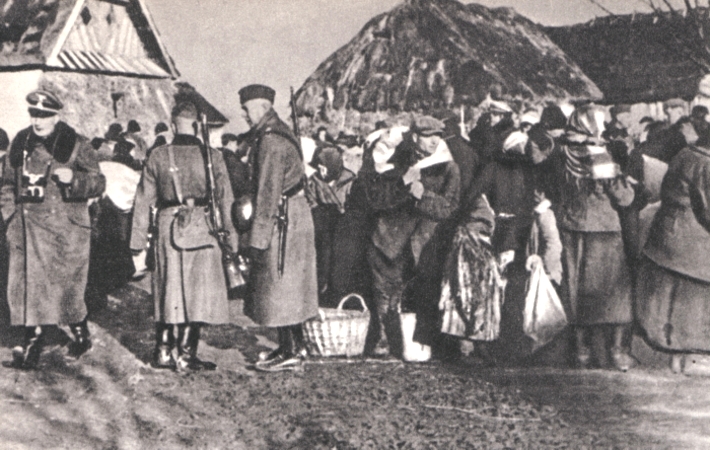80 years ago, on the night of 27 to 28 November 1942, the Germans started a deportation of the Polish civilian population from the occupied Zamojszczyzna. It is assumed that by August 1943 more than 100,000 people, including 30,000 children, had to leave their homes.
In 1941, the Germans elaborated a document known as the General Plan East (General Plan Ost), which envisaged the mass resettlement of around 30 million people from the Polish territories and the western part of the Soviet Union. In turn, 5 million Germans would have been relocated to the abandoned areas. This was in line with the German policy of providing living space (Lebensraum).
The plan assumed its implementation in successive stages over a period of 25 years. The project was developed in the Main Security Office of the Third Reich under the direct supervision of Heinrich Himmler, who decided in July 1941 that the first area to be covered by the displacement action would be the Zamojszczyzna region, located in the eastern part of the Lublin district of the General Government. The choice of this area was not accidental, as it was famous for its exceptionally fertile soils. The first deportation action, a test one, was carried out in November 1941. At that time, around 2,000 people were displaced from several villages in the Zamość region to the Hrubieszów area.
In mid-November 1942. Himmler signed a directive recognising the Zamojszczyzna region as “the first German resettlement area in the General Government”. The deportation action began on the night of 27/28 November 1942 starting with Skierbieszów and the surrounding villages. After that, the Germans carried out the operation in subsequent villages in the districts of Zamość, Hrubieszów, Tomaszów and Biłgoraj. Inhabitants of the deported villages were ordered by the occupiers to take only their necessary personal belongings and to gather in a specific place. On the spot, the Germans usually murdered the crippled, the sick or the elderly. The deported people were herded or transported to transit camps. There, a selection was carried out, some of them were sent to forced labour in the Third Reich, others were taken to concentration camps.
The tragedy of deportation also affected children. Many of them did not survive their stay in the transit camp as well as the extremely harsh transport conditions. More than 4,500 children were sent to be Germanised. Many of them never returned to their families, becoming the victims of Germanisation.





